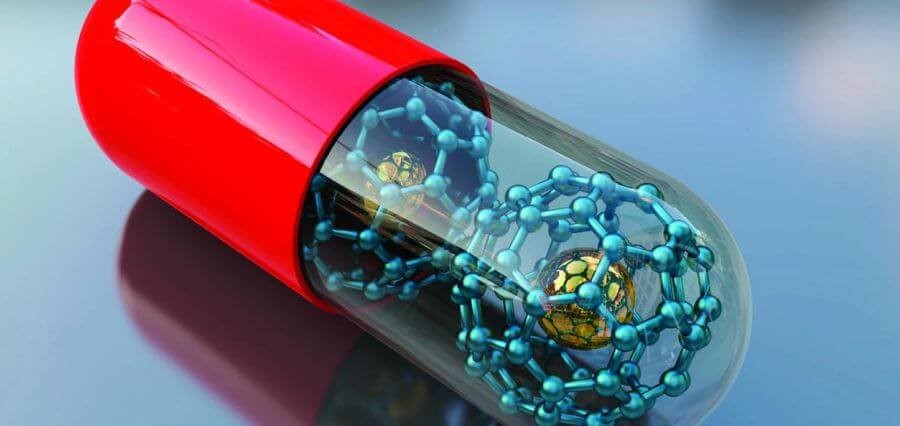Nanomedicine refers to the application of nanotechnology in the medical field, where nanoscale materials, such as nanoparticles, are utilized for various therapeutic and diagnostic purposes. These nanoparticles exhibit unique properties that make them highly effective in targeting specific cells and tissues within the body, thus offering a promising solution to several complex medical challenges.
Table of Contents
History and Evolution of Nanomedicine
The inception of nanomedicine can be traced back to the pioneering work of physicist Richard Feynman in 1959, who introduced the fundamental concept of nanotechnology. Subsequently, in 1974, the term “nanotechnology” was officially coined by Japanese scientist Norio Taniguchi, laying the foundation for the field’s rapid advancement. The 1990s witnessed significant strides in the application of nanotechnology in medicine, leading to the development of the first nanomedicines and initiating a new era in healthcare technology.
Nanoparticles in Drug Delivery
One of the key areas where nanomedicine has demonstrated immense potential is in the realm of drug delivery. By engineering nanoparticles with specific properties, scientists have been able to enhance the efficacy and precision of drug administration. These tailored nanoparticles can target particular cells or tissues, facilitating the delivery of therapeutic agents directly to the site of action. This approach not only minimizes the side effects of medications but also maximizes their therapeutic benefits.
Targeted Drug Delivery with Nanoparticles
The capability of nanoparticles to facilitate targeted drug delivery has transformed the landscape of modern medicine. By leveraging the unique physicochemical properties of nanoparticles, medical professionals can administer medications precisely to the affected areas, thereby minimizing collateral damage to healthy tissues. This targeted approach significantly improves the effectiveness of treatments and enhances patient compliance, leading to better clinical outcomes and an overall improved quality of life.
Diagnostic Tools in Nanomedicine
In addition to drug delivery, nanomedicine has also revolutionized the field of disease diagnostics. The integration of nanoparticles in diagnostic tools has enabled healthcare providers to detect various diseases at an early stage with unparalleled accuracy. These advanced tools offer a comprehensive view of the patient’s health status, allowing for timely interventions and personalized treatment strategies. This early detection plays a crucial role in improving patient prognosis and enhancing overall survival rates.
Nanoparticles in Disease Detection and Monitoring
Nanoparticles have proven to be instrumental in disease detection and monitoring, providing clinicians with valuable insights into the progression of various illnesses. By utilizing nanoparticles in imaging techniques, healthcare professionals can visualize and assess the development of diseases with exceptional precision. This proactive approach facilitates timely adjustments to treatment plans and enables the monitoring of treatment efficacy, leading to better disease management and improved patient outcomes.
Role of Nanomedicine in Healthcare Transformation
The transformative impact of nanomedicine on the healthcare landscape cannot be overstated. As the field continues to advance, the integration of nanoparticles in medical practices is expected to drive a paradigm shift in patient care. The seamless amalgamation of nanotechnology with conventional medical approaches is anticipated to pave the way for a more personalized and patient-centric healthcare experience, ultimately redefining the standards of medical excellence.
Advantages of Nanomedicine
Nanomedicine advantages that have the potential to reshape the future of healthcare. Some of the key benefits include:
- Enhanced Precision in Treatment
By facilitating targeted drug delivery and personalized treatment approaches, nanomedicine ensures precise and effective interventions, minimizing unnecessary side effects and maximizing therapeutic outcomes.
- Improved Diagnostic Accuracy
The incorporation of nanoparticles in diagnostic tools allows for the early detection of diseases with unparalleled accuracy, enabling timely and targeted interventions for improved patient prognosis.
- Targeted Therapeutic Options
Nanoparticles enable the development of highly targeted and specific therapeutic options, ensuring that treatments are tailored to the unique characteristics of each patient, thus optimizing treatment efficacy and enhancing patient well-being.
Nanoparticles in Cancer Imaging
Cancer imaging stands as one of the most crucial applications of nanomedicine. The integration of nanoparticles in cancer imaging techniques has revolutionized the detection and monitoring of various cancer types, offering a comprehensive understanding of the disease’s progression and aiding in the formulation of effective treatment strategies.
Magnetic Nanoparticles for Cancer Imaging
Among the diverse types of magnetic nanoparticles for cancer imaging, magnetic nanoparticles have garnered significant attention for their exceptional imaging capabilities. These magnetic nanoparticles can be precisely guided to the tumor site, allowing for accurate and detailed imaging of cancerous tissues. This advanced imaging technology plays a pivotal role in facilitating early cancer detection and monitoring treatment responses, thereby improving patient outcomes and survival rates.
Application of Magnetic Nanoparticles in Cancer Diagnostics
The application of magnetic nanoparticles in cancer diagnostics has transformed the landscape of cancer management. By harnessing the unique properties of magnetic nanoparticles, healthcare professionals can obtain comprehensive and precise insights into the nature and progression of cancer, facilitating the development of tailored treatment regimens and personalized care plans. This tailored approach not only enhances the efficacy of cancer treatments but also improves patient prognosis, underscoring the critical role of magnetic nanoparticles in the fight against cancer.
Future Prospects of Nanomedicine
Looking ahead, the future of nanomedicine appears incredibly promising, with ongoing research and development initiatives focusing on expanding the scope of nanotechnology in healthcare. As scientists continue to explore the potential applications of nanoparticles in various medical disciplines, the prospects of more effective and personalized healthcare interventions are becoming increasingly tangible. The continued evolution of nanomedicine is expected to drive innovation in patient care, leading to a transformative shift in the way diseases are diagnosed, treated, and managed.
Conclusion
Nanomedicine represents a groundbreaking approach that holds tremendous potential for transforming the landscape of modern healthcare. Through the innovative use of nanoparticles, this interdisciplinary field has opened new avenues for more precise and personalized medical interventions, paving the way for improved patient outcomes and a higher quality of life. As the field of nanomedicine continues to progress, the integration of advanced nanotechnological solutions is poised to redefine the standards of medical excellence, offering new hope and improved prospects for patients worldwide.


 Home
Home










